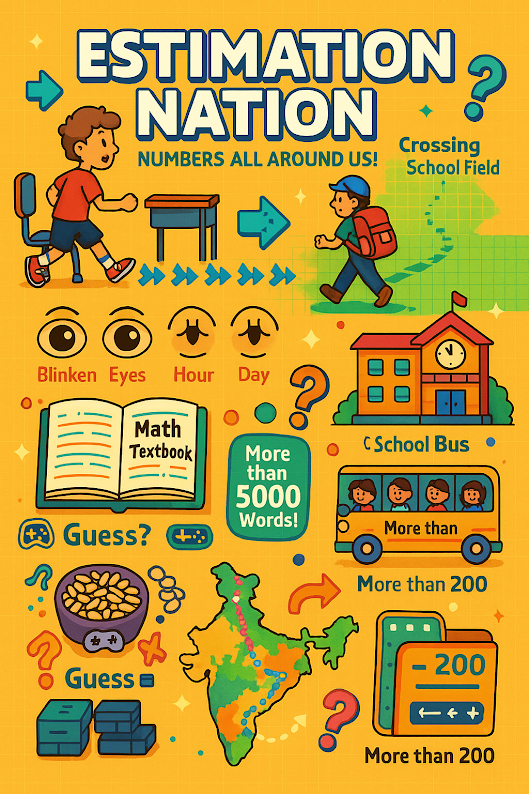Activity W 6.8: The Idli-Vada Number Game!
A fun and educational game blending math with movement and memory!
Game! Students may be asked to sit in a circle and play a game of numbers.
Game Rules Recap:
-
Say numbers in order starting from 1.
-
Say "idli" instead of numbers that are multiples of 3.
-
Say "vada" instead of numbers that are multiples of 5.
-
Say "idli-vada" if the number is a multiple of both 3 and 5.
-
Mistakes = Out! The game continues until one student is left.
One of the children starts by saying ‘1’.
The second player says ‘2’, and so on.
But when it is the turn of 3, 6,9, … (multiples of 3), the player should say ‘idli’ instead of the number.
When it is the turn of 5, 10, … (multiples of 5), the player should say ‘vada’ instead of the number.
When a number is both a multiple of 3 and a multiple of 5, the player should say ‘idli-vada’!
If a player makes any mistake, they are out.
The game continues in rounds till only one person remains.
Teacher/Students may ask such questions for this game—
1. For which numbers should players say “idli”instead of saying the number?
All multiples of 3:
3, 6, 9, 12, 18, 21, 24, ..., etc.
Exclude numbers also divisible by 5 (those are "idli-vada").
2. For which numbers should players say “vada”?
All multiples of 5:
5, 10, 20, 25, ..., etc.
Exclude numbers also divisible by 3.
3. What is the first number for which players say “idli-vada”?
15 (First common multiple of 3 and 5)
LCM(3, 5) = 15
4. At what number is “idli-vada” said for the 10th time?
These occur at: 15, 30, 45, 60, 75, 90, 105, 120, 135, 150
So, 150 is the 10th occurrence.
If the game is played for the numbers 1 to 90,
Analysis for Numbers 1 to 90
-
Multiples of 3 from 1 to 90:
⟶ 3, 6, ..., 90 → Total = 30 numbers -
Multiples of 5 from 1 to 90:
⟶ 5, 10, ..., 90 → Total = 18 numbers -
Multiples of 15 (i.e. both 3 and 5):
⟶ 15, 30, ..., 90 → Total = 6 numbers
So:
find out:
How many times would the children say ‘idli’ (including the times they say ‘idli-vada’)?
"idli" is said: 30 times (includes 6 “idli-vada”)
⟶ Only “idli” = 30 - 6 = 24
How many times would the children say ‘vada’ (including the times they say ‘idli-vada’)?
"vada" is said: 18 times (includes 6 “idli-vada”)
⟶ Only “vada” = 18 - 6 = 12
How many times would the children say ‘idli-vada’?
"idli-vada" is said: 6 times
The teacher may ask students to play the game for the following pairs of numbers
—
Idli Vada
2 5
3 7
4 6
| Idli (A) | Vada (B) | First "idli-vada" | Next few |
|---|---|---|---|
| 2 | 5 | 10 | 20, 30, 40... |
| 3 | 7 | 21 | 42, 63, 84... |
| 4 | 6 | 12 | 24, 36, 48... |






